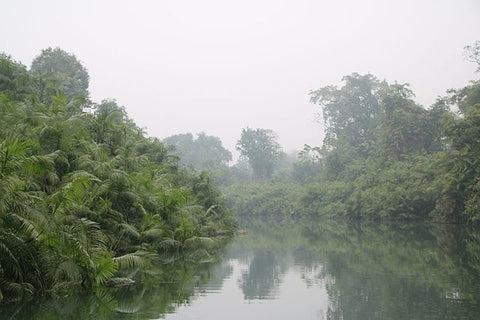The Importance Of Wetlands In Katarniaghat's Ecosystem
Wetlands play a crucial role in the ecosystem of Katarniaghat Wildlife Sanctuary, offering a unique and diverse habitat that supports a wide range of plant and animal species. Here are several key aspects highlighting the importance of wetlands in the sanctuary's ecosystem:
-
Biodiversity Hotspots:
- Wetlands are known as biodiversity hotspots and Katarniaghat's wetlands are no exception. They provide a home to a rich diversity of flora and fauna, including numerous species of birds, mammals, reptiles and amphibians.

- Wetlands are known as biodiversity hotspots and Katarniaghat's wetlands are no exception. They provide a home to a rich diversity of flora and fauna, including numerous species of birds, mammals, reptiles and amphibians.
-
Critical Habitat for Birds:
- Many species of migratory and resident birds depend on wetlands for breeding, feeding and resting. The sanctuary's wetlands likely serve as critical habitats for various waterfowl and wading birds.
-
Nesting and Breeding Sites:
- Wetlands often act as important nesting and breeding sites for various aquatic species, including amphibians and fish. The presence of these areas contributes to the overall reproductive success of several species.

- Wetlands often act as important nesting and breeding sites for various aquatic species, including amphibians and fish. The presence of these areas contributes to the overall reproductive success of several species.
-
Water Source for Wildlife:
- Wetlands provide a reliable source of water, especially during dry periods. This is essential for both resident and migratory wildlife, ensuring their survival in an environment where water scarcity can be a challenge.
-
Flood Control and Water Purification:
- Wetlands act as natural buffers against floods by absorbing excess water during heavy rainfall. They also play a vital role in water purification, filtering pollutants and sediments before the water enters larger water bodies.

- Wetlands act as natural buffers against floods by absorbing excess water during heavy rainfall. They also play a vital role in water purification, filtering pollutants and sediments before the water enters larger water bodies.
-
Carbon Sequestration:
- Wetlands are effective carbon sinks, capturing and storing large amounts of carbon. This helps mitigate the effects of climate change by reducing the concentration of greenhouse gases in the atmosphere.
-
Support for Endangered Species:
- Wetlands can provide a habitat for endangered or threatened species, contributing to their conservation. The sanctuary's wetlands may support species that are particularly adapted to this specific ecosystem.

- Wetlands can provide a habitat for endangered or threatened species, contributing to their conservation. The sanctuary's wetlands may support species that are particularly adapted to this specific ecosystem.
-
Recreation and Tourism:
- Wetlands contribute to recreational activities such as birdwatching, nature walks and eco-tourism. They attract visitors and nature enthusiasts, promoting environmental awareness and conservation.
-
Cultural and Traditional Significance:
- Wetlands often hold cultural and traditional significance for local communities. They might play a role in local rituals, provide resources for traditional practices and contribute to the overall cultural heritage of the region.
-
Education and Research Opportunities:
- Wetlands offer opportunities for scientific research and environmental education. Researchers can study the unique ecosystems, biodiversity and ecological processes associated with wetlands in Katarniaghat Wildlife Sanctuary.
Preserving and managing the health of wetlands in Katarniaghat is essential for maintaining the overall ecological balance and ensuring the sanctuary's sustainability. Conservation efforts should focus on protecting these valuable habitats and promoting sustainable practices that benefit both wildlife and the surrounding communities.












































































